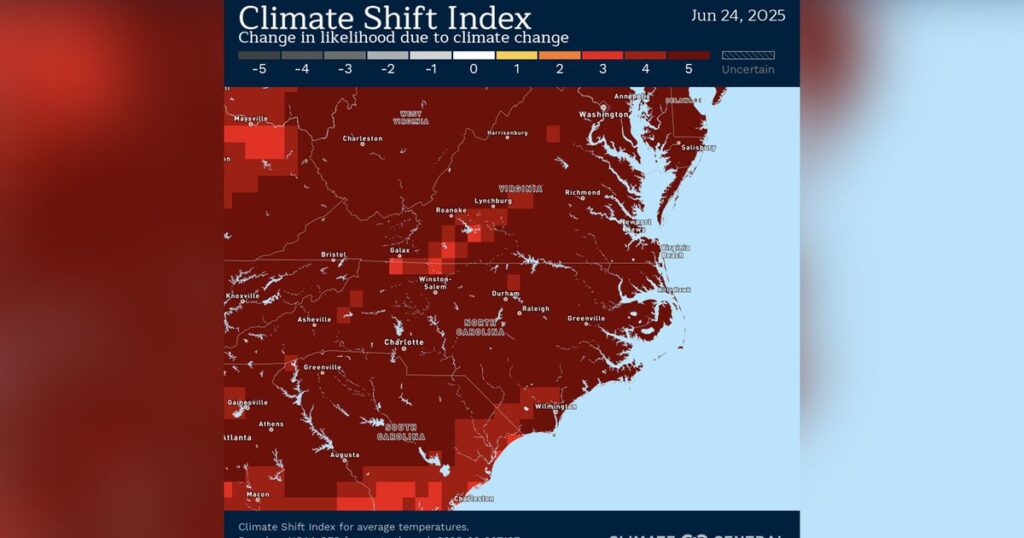On a sweltering Tuesday at Raleigh’s Chavis Park, solar-powered fans struggled to combat temperatures that felt like 111 degrees. Concerned about the heat, a grandmother emphasized the importance of safety, highlighting the urgency of avoiding heat-related health issues.
The Triangle Climate Shift Index (CSI) reported a level 5 warning, indicating a significant impact of global warming on extreme heat, exacerbating the situation with “heat domes” affecting the region. These weather patterns have caused summer temperatures in Raleigh-Durham to increase by 4.4 degrees since the 1970s, adding roughly 39 more hot days each year.
In downtown Raleigh, the temperature can be 19 degrees warmer than in shaded suburbs due to urban heat effects. This rise in temperature is linked to multiple heat-related emergency visits in North Carolina, raising concerns about severe health impacts. Despite no confirmed heat-related fatalities thus far in 2025, health officials warn that extreme heat can be life-threatening, particularly for those with preexisting conditions.
The Department of Health and Human Services (DHHS) is utilizing a bilingual thermal health alert system to provide county-level warnings and encourages outdoor workers to take necessary precautions. While relief from the heat may arrive by Friday, temperatures will still remain elevated.
Officials note that such extreme temperatures are increasingly common and urge communities to adapt to these new climatic realities.
Source link


